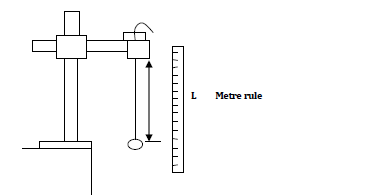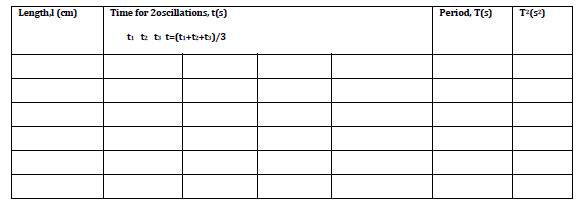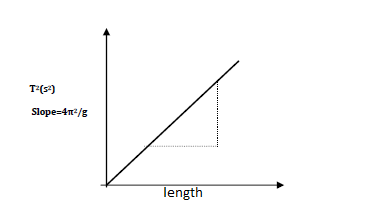This can be done as follows:

- Set the apparatus as shown in the diagram above. Set the length of the string at 30cm. note that the length l is measured from the centre of the bob.
- Displace the bob sideways through a small angle of about 2
0 and release it so as to oscillate.
- With the help of a stop watch, measure and record the time for ten oscillations (allow some little oscillations after release before timing). Repeat this step twice or thrice and determine the average time.
Hence calculate the period T(time for one oscillation).
- Repeat the above steps for l=40cm, 50cm, 60cm, 70cm and 80cm. complete the table below:

- plot a graph of T
2 against length l in metres.
Observations and conclusionThe frequency of oscillation increases with decrease in length of the string. A graph of T
2 against length l is a straight line through the origin.
Generally, a graph of T
2 against length for a simple pendulum satisfies the equation T
2=4p
2l/g.
Hence, the slope of the graph above is equals to 4p
2/g.

sharon kalunda answered the question on
April 24, 2019 at 06:09